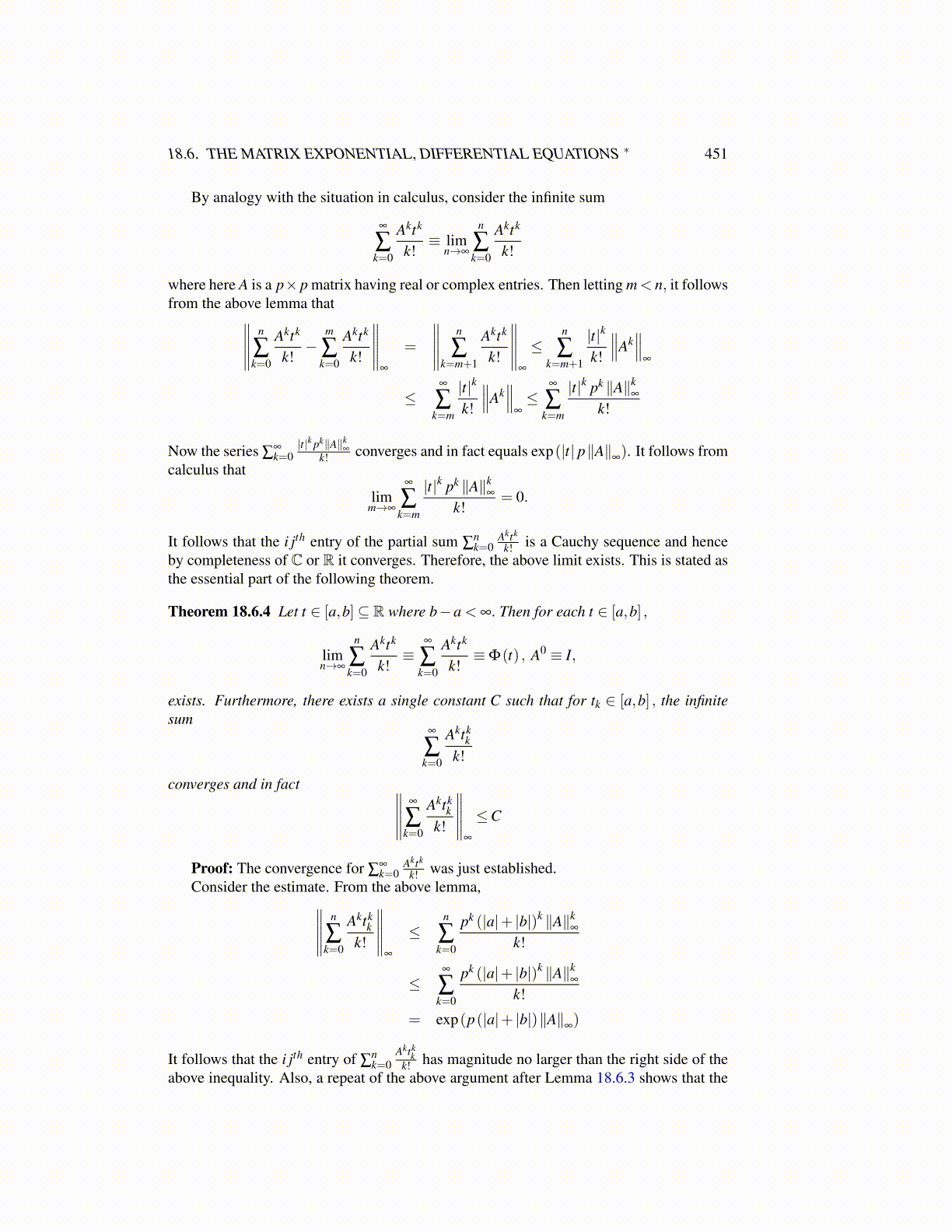
18.6. THE MATRIX EXPONENTIAL, DIFFERENTIAL EQUATIONS ∗ 451
By analogy with the situation in calculus, consider the infinite sum
∞
∑k=0
Aktk
k!≡ lim
n→∞
n
∑k=0
Aktk
k!
where here A is a p× p matrix having real or complex entries. Then letting m< n, it followsfrom the above lemma that∥∥∥∥∥ n
∑k=0
Aktk
k!−
m
∑k=0
Aktk
k!
∥∥∥∥∥∞
=
∥∥∥∥∥ n
∑k=m+1
Aktk
k!
∥∥∥∥∥∞
≤n
∑k=m+1
|t|k
k!
∥∥∥Ak∥∥∥
∞
≤∞
∑k=m
|t|k
k!
∥∥∥Ak∥∥∥
∞
≤∞
∑k=m
|t|k pk ∥A∥k∞
k!
Now the series ∑∞k=0
|t|k pk∥A∥k∞k! converges and in fact equals exp(|t| p∥A∥
∞). It follows from
calculus that
limm→∞
∞
∑k=m
|t|k pk ∥A∥k∞
k!= 0.
It follows that the i jth entry of the partial sum ∑nk=0
Aktk
k! is a Cauchy sequence and henceby completeness of C or R it converges. Therefore, the above limit exists. This is stated asthe essential part of the following theorem.
Theorem 18.6.4 Let t ∈ [a,b]⊆ R where b−a < ∞. Then for each t ∈ [a,b] ,
limn→∞
n
∑k=0
Aktk
k!≡
∞
∑k=0
Aktk
k!≡Φ(t) , A0 ≡ I,
exists. Furthermore, there exists a single constant C such that for tk ∈ [a,b] , the infinitesum
∞
∑k=0
Aktkk
k!
converges and in fact ∥∥∥∥∥ ∞
∑k=0
Aktkk
k!
∥∥∥∥∥∞
≤C
Proof: The convergence for ∑∞k=0
Aktk
k! was just established.Consider the estimate. From the above lemma,∥∥∥∥∥ n
∑k=0
Aktkk
k!
∥∥∥∥∥∞
≤n
∑k=0
pk (|a|+ |b|)k ∥A∥k∞
k!
≤∞
∑k=0
pk (|a|+ |b|)k ∥A∥k∞
k!
= exp(p(|a|+ |b|)∥A∥∞)
It follows that the i jth entry of ∑nk=0
Aktkk
k! has magnitude no larger than the right side of theabove inequality. Also, a repeat of the above argument after Lemma 18.6.3 shows that the